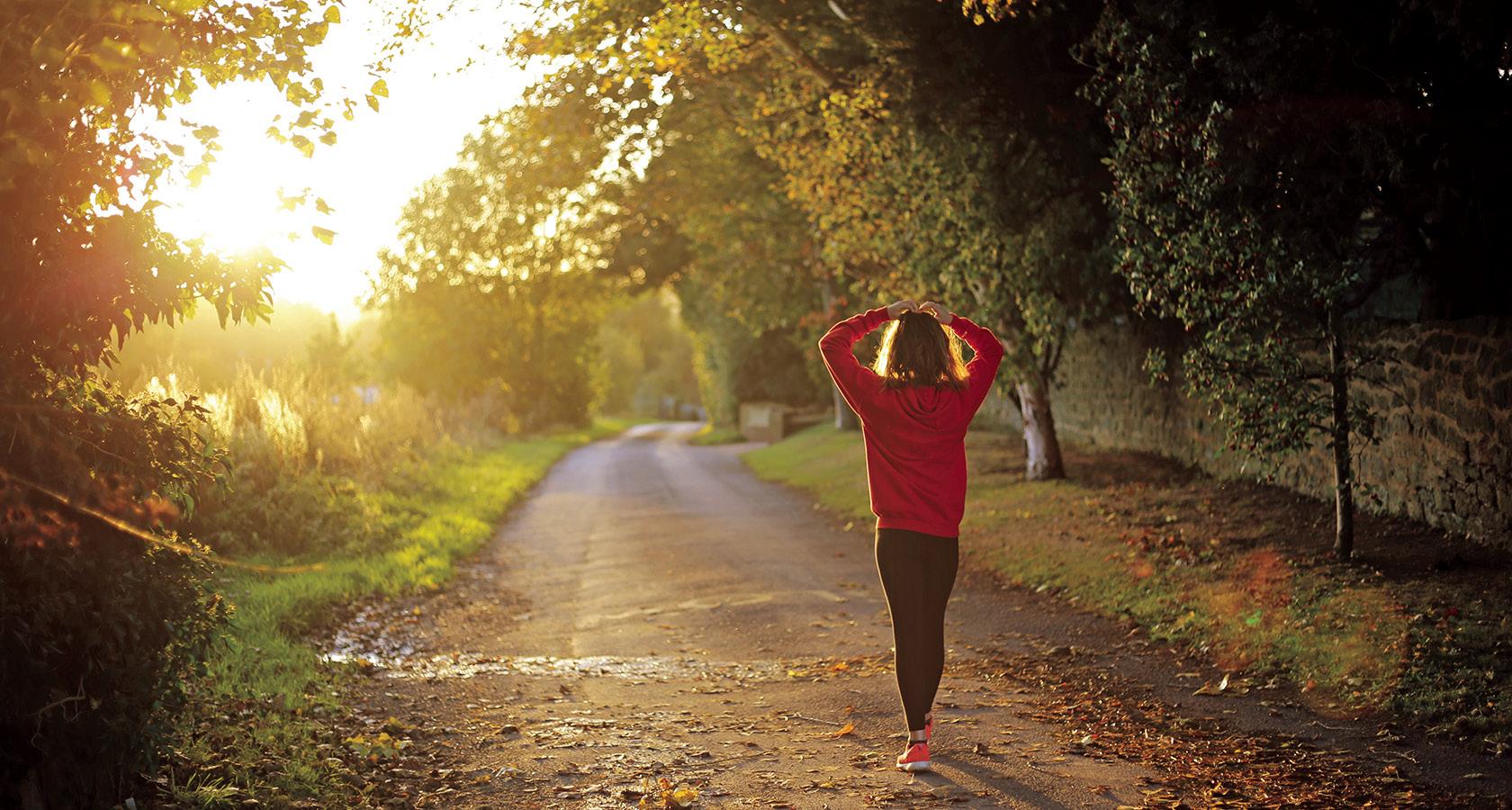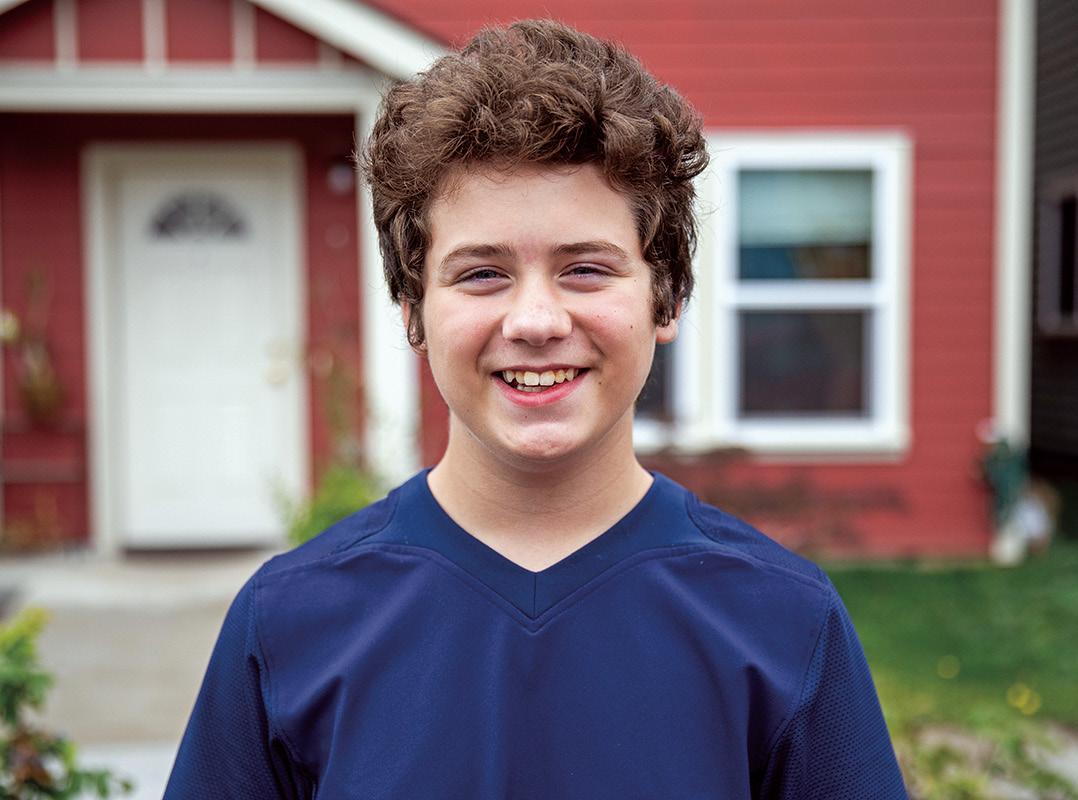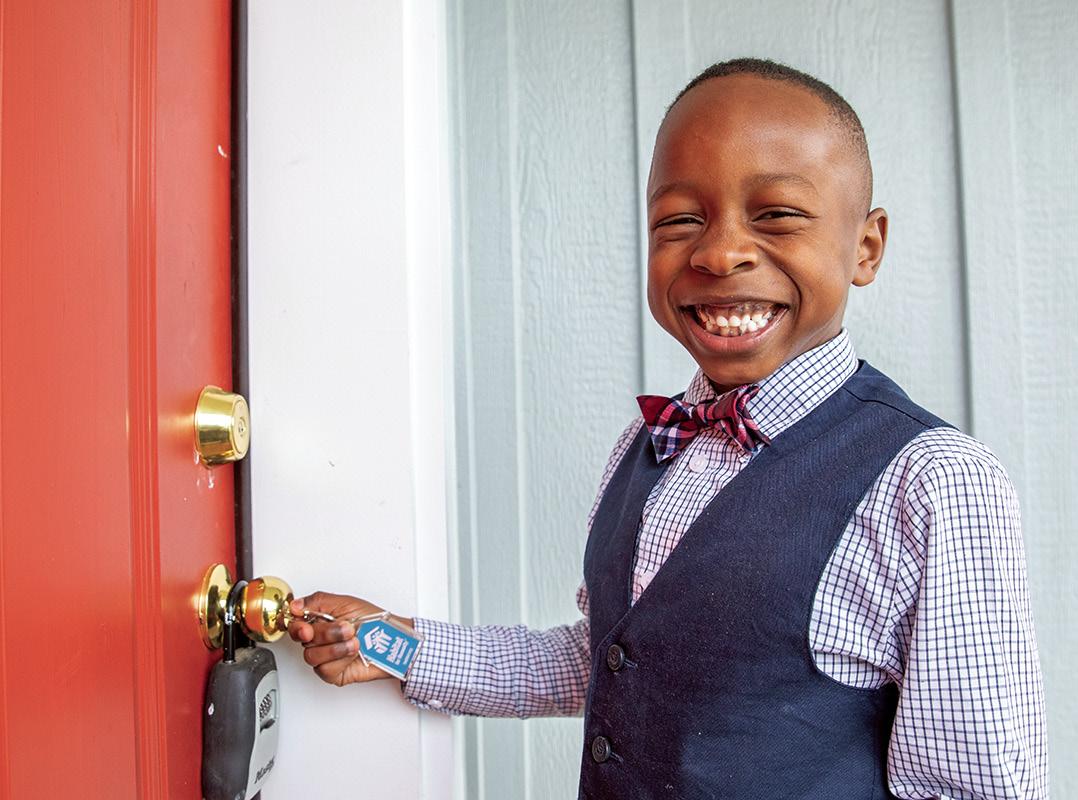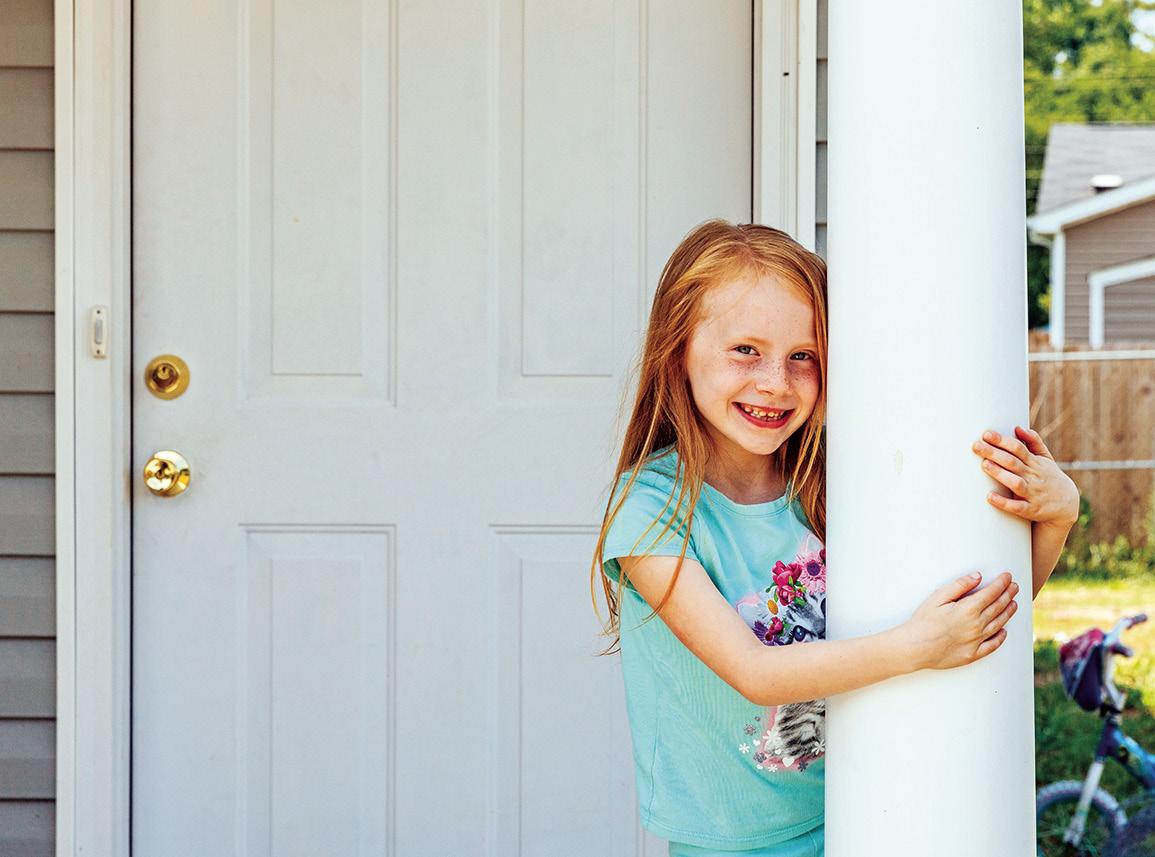
8 minute read
Running Your First 10k
Starting to run can be daunting, but it’s one of the most rewarding activities you can do. Not only that, but it’s low cost and easy to do anywhere you are. Just lace up your shoes and head out the door!
When starting any rigorous exercise its important to consult with your
health care provider to ensure you are clear for exercise.
When taking the next steps to progress from a walking regime to running, it’s always best to consult with a coach or personal trainer to build a program that suits you. This will help ensure you follow a program that builds up slowly and allows the body time to adapt to the impact of running. One of the limitations to running is being prone to injuries or stress on knees and back, but if a plan is built and followed correctly, you can alleviate many of these misconceptions that running is too hard on the body.
As you start your running journey,
it’s a good idea to start and finish each session with a 10-minute brisk walk to warm up (or cool down) the muscles. It’s also recommended to do light stretches after each session to flush out the muscles and keep them moving freely. These two simple tasks can greatly reduce your chance of injury.
As you look to build your running
For information and training clinics, visit frontrunners.ca.
program, some things to consider are starting with a walk and run program. You should follow a timed walk/run interval, which allows the body to build up the strength and adapt to the muscle strain caused by the increased impact from running.
The walk portion allows the muscles to have a short break and recovery before the next run interval. It is also a good idea to space out your exercise days out throughout the week to ensure you give your body time to rest and recover before the next session and to follow a three week build program, followed by one-week recovery session.
Starting your journey to running should be pain free and fun. By following a few of these suggestions you should be able develop a passion for running.
Some other helpful tips are finding a friend or a group to run with to help keep you honest and motivated. We all know how hard it is to get out the door some days, so having a support network can really help.
There are many helpful resources online or with your local specialty running retailers.


STAGES Daytime Pre-School Classesfor the little angels... In-Person & On-Line Options
Performing Arts School since 1980
Come Dance With Us
• Offering classes for Teens & Pre-Teens in Jazz, Ballet, Lyrical, Tap. Musical Theatre, Acrobatics & Hip Hop, in a non-competitive atmosphere. • Not sure which class to take? - Try a Drop-In: No hassle, No Obligation.
STAGES Performing Arts School #301 1551 Cedar Hill X Rd Call 250-384-3267 Email us at: stagesdance@shaw.ca Or visit our website: www.stagesdance.com




Open a door… to a brighter future

Online Art Auction
May 28 to June 13, 2021
A unique opportunity to own an original artwork and help Habitat for Humanity Victoria to Open a Door for families, as local artists imagine a brighter future for us all.
In support of Habitat Humanity Victoria, presented by Pemberton Holmes
habitatvictoria.com



Dinner & Dessert
Most children love helping out in the kitchen, particularly if it involves the devoted attention of a grandparent. Asking your grandchildren to help cook a meal not only teaches them lifelong cooking skills, it is a perfect way to bond and share. Food has always been a source of connection. A way to share your culture and heritage. And children enjoy the sense of responsibility, confidence and self-reliance that comes with serving a dinner they helped to prepare.
When getting children to help with meal prep, figure out a few age-appropriate tasks: • Young children can help with measuring and stirring. They like to wash vegetables and can use a butter knife to slice soft foods like mushrooms. • Older children are ready to learn new skills. They can slice with small paring knives, grate cheese, read and follow simple recipes.
Here are two simple recipes that are perfect for children of all ages to help out with. Older children, ’tweens and teens can even take the lead, with you helping them instead!

Emillie Parrish writes from Victoria and Saturna Island. She is the author of the Pacific Northwest lifestyle blog: BerriesAndBarnacles.com.
Cinnamon Cookies
Making cut-out cookies is probably one of my daughter’s favourite activities. While eating cookies is nice, she really likes looking through our collection of cookie cutters and choosing which shapes to make. After we’ve rolled out the dough twice, she gets to make a few free-formed cookie shapes. It’s like edible playdough.
This cookie dough is strong and reliable. I’ve added a bit of cinnamon for flavour, but you could leave them plain and decorate afterwards instead.
½ cup of white or brown sugar ½ cup of butter, softened 2 eggs 1 tsp vanilla extract 2½ cups of flour 2 tsp ground cinnamon 2 tsp baking powder ¼ tsp salt
1. Cream the butter and sugar together in a large bowl. 2. Beat in the eggs and vanilla extract, until smooth.
3. Add the flour, cinnamon, baking powder and salt. Stir to combine. The dough will be a bit stiff, so knead gently to bring everything together. 4. Place the dough in a plastic bag and refrigerate for at least 2 hours before baking. 5. When ready to bake, start by preheating the oven to 375˚F and grease two cookie sheets. 6. Divide the dough in half and only work with half at a time, leaving the other half in the fridge. 7. Lightly dust the counter and rolling pin with flour, then roll out the dough until it’s ½ cm thick. 8. Cut out as many cookies as possible and transfer to the cookie sheets. Place the remaining dough back in the fridge, then work with the second ball of dough. 9. After both balls have finished a first round of cookie cutting, roll both balls out together for a final round of cookie cutting. The remaining scraps can be turned into hand-formed “playdough” cookies. They won’t be as soft as the cut cookies, but they’ll still taste good. 10. Bake the cookies for 7 to 9 minutes. Cool slightly before removing from the cookie sheets. Store in an air-tight container for up to a week.

Stuffed Quesadillas
Quesadillas are a fun and easy dinner. And a perfect way to get children helping out in the kitchen. They can chop vegetables, grate cheese and put together their own quesadillas. If you’re only going to make 2 or 3 quesadillas, then it’s probably easiest to cook them in a frying pan. Whereas baking quesadillas allows you to make a whole bunch at once.
If you want to fry the quesadillas instead of baking, heat a pan on medium, then toast the quesadillas for 3 to 5 minutes on each side.
8 large flour tortillas or 16 small corn tortillas 1 can refried beans 1 tin of sliced black olives 1 large red bell pepper 6 spring onions 4 Roma tomatoes 2 avocados ¼ cup cilantro 1 cup grated cheese Salsa, sour cream and hot sauce for serving.
1. Each quesadilla is prepared individually, allowing everyone to pick their favourite ingredients. Start by preheating the oven to 400˚F. Lightly grease two baking sheets with vegetable oil. 2. Next prepare all of the fillings. Drain the olives. Chop the red pepper, spring onions and tomatoes into bite-sized pieces. Slice the avocado. Wash and chop the cilantro. Grate the cheese. 3. To put together a quesadilla, start by spreading a layer of refried beans over one tortilla. Have each person decorate the tortilla with their choice of fillings. Top with a ¼ cup of grated cheese, then put a second tortilla on top. 4. Place the quesadillas on the baking sheets. Bake for 8 minutes. Remove from the oven. Press down on each quesadilla with a spatula to stick the layers together, then carefully flip the quesadilla over. Bake for another 8 minutes, until the cheese is melted and the tortillas have started to brown. 5. Slice into quarters and serve with salsa and sour cream.





Calling all nature lovers! Join the CRD’s Biodiversity Challenge!
Friday, May 21 - 24, 2021
How many plants, animals and fungi can you find? Join us on May long weekend and get outside with your family to explore the diversity of life around us! Enter your observations into the free and simple iNaturalist app and check out what other people have found too!






